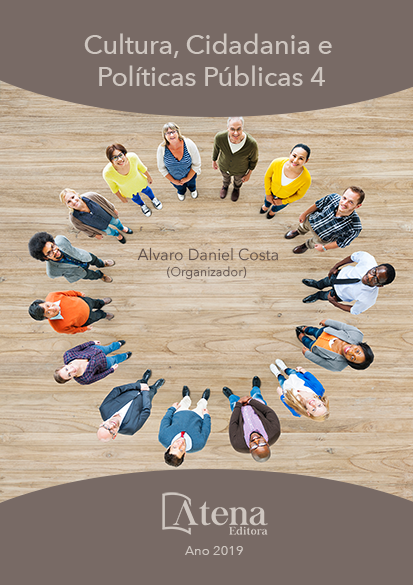
A CONJUNTURA DO MUNDO DOS DETENTOS E SUAS VULNERABILIDADES
Objetivo: A partir da percepção
dos detentos, objetivou-se determinar a
sua vulnerabilidade social relacionada às
Infecções Sexualmente Transmissíveis, Vírus
da Imunodeficiência Humana e Síndrome
da Imunodeficiência Adquirida (IST’s/HIV/
AIDS). Metodologia: Trata-se de um estudo
exploratório-descritivo, transversal, de
abordagem qualitativa, desenvolvido em uma
unidade prisional, do estado do Tocantins,
Brasil. Participaram da pesquisa todos os
sujeitos que responderam aos critérios de
inclusão, até atingirem a saturação da amostra.
Os dados foram coletados por meio de uma
entrevista semi-estruturada aberta e estudados
através da análise de conteúdo proposta
por Bardin (2011). Resultados: Verificou-se
que os sujeitos não se autoclassificam como
sendo vulneráveis aos agravos. Constatou-se
o baixo grau de conhecimento sobre as IST’s,
suas características, formas de contágio e
métodos preventivos. Conclusão: Percebe-se
a necessidade de maior amparo social e de
assistência à saúde, além do empoderamento
dos mesmos. Tendo em vista que a privação
de liberdade aumenta a vulnerabilidade dos
detentos, faz-se necessária a atenção não
apenas nos agravos, mas no contexto social no
qual os detentos estão inseridos, bem como nas
respostas sociais que propiciam mudançade
comportamento.
A CONJUNTURA DO MUNDO DOS DETENTOS E SUAS VULNERABILIDADES
-
DOI: 10.22533/at.ed.80319250120
-
Palavras-chave: Comportamento sexual; Percepção; Prisão; Vulnerabilidade Social.
-
Keywords: Sexual behavior; Perception; Prison; Social vulnerability.
-
Abstract:
Objective: From the prisoners perception, we aimed to determine their
social vulnerability related to Sexually Transmitted Infections, Human Immunodeficiency
Virus and Acquired Immunodeficiency Syndrome (STI/HIV/AIDS). Methodology: This
is an exploratory-descriptive, cross-sectional study, in a qualitative approach. It was
developed in a prison unit, in the state of Tocantins, Brazil. All subjects who answered
the inclusion criteria participated in the research, until the saturation of the sample.
Data were collected through a semi –structured and open interview and were studied
through the content analysis proposed by Bardin (2011 ) . Results: it was realized that
the subjects did not classify themselves as being vulnerable to the diseases. It was
also realized the low degree of knowledge that the subjects have about STIs, their
characteristics, forms of transmission and prevention methods. Conclusion: We can
see the need for greater social protection and health care, and also their empowering.
Having in mind that the deprivation of liberty increases the vulnerability of detainees, we
can realize that it is necessary attention not only in diseases, but in the social context
in which the detainees are inserted, as well in the social responses that promote a
behavior change.
-
Número de páginas: 15
- Marlete Scremin
- Patrícia Alves de Mendonça Cavalcante
- Patricia Fernandes Albeirice da Rocha
- Rebeca Saiter Ribeiro
- Sergio Celestino Cavalcante Santos
- Tatianne Comin Cardoso
- Marceli Diana Helfenstein Albeirice da Rocha


